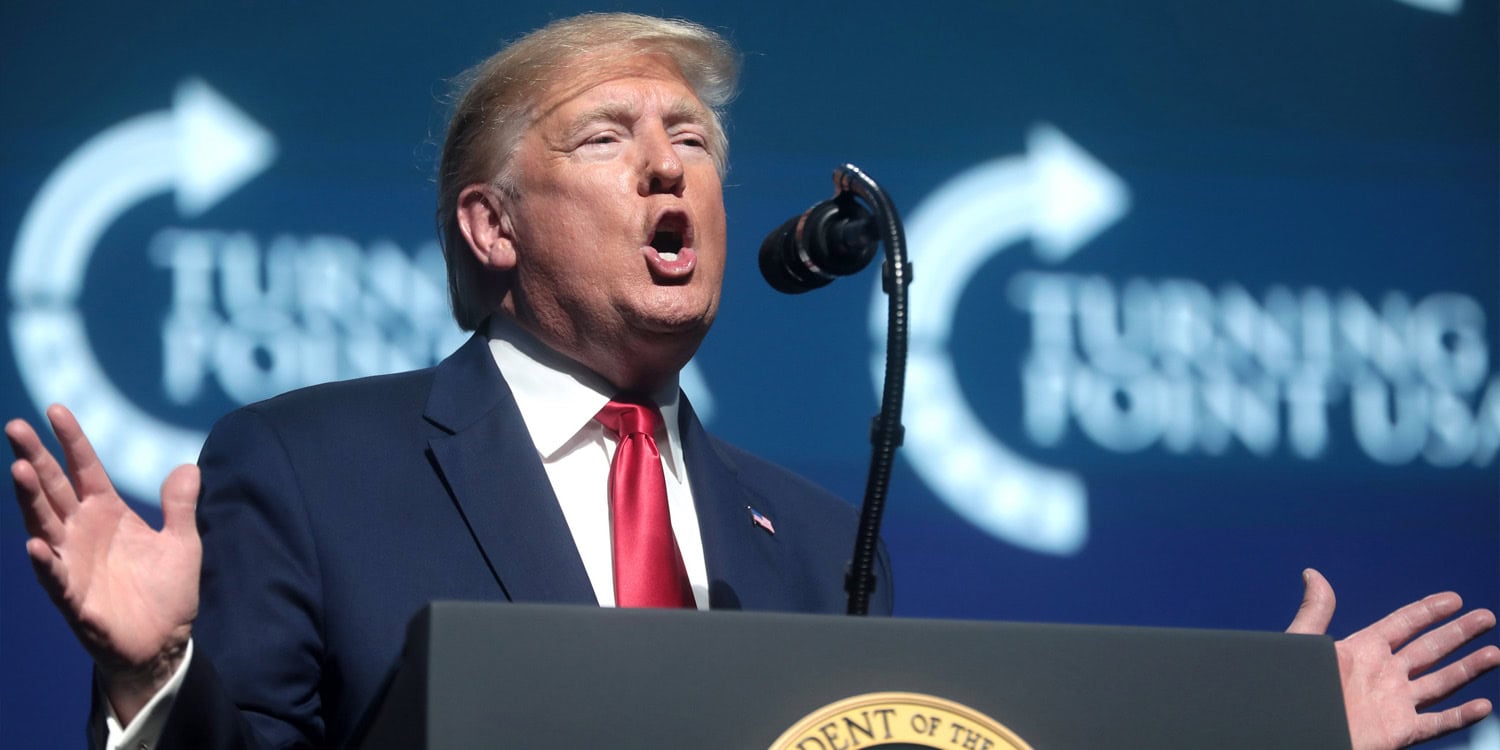A new study published in the American Political Science Review sheds light on how political elites, such as former President Donald Trump, can influence public behavior through polarizing messages on social media. The study provides evidence that Trump’s controversial tweets in April 2020, which called for the “liberation” of Minnesota, Michigan, and Virginia from COVID-19 lockdowns, led to an a decrease in compliance with stay-at-home orders and a rise in arrests, especially among white Americans.
During the COVID-19 pandemic, political polarization in the United States reached new heights, with leaders from different parties often giving conflicting advice on health measures. Trump’s tweets about the need to “liberate” states under lockdown were especially controversial, as they directly challenged state-level policies. The researchers wanted to examine whether these messages, sent during a national health crisis, encouraged supporters to act in ways that violated government guidelines. The study’s aim was to understand the broader consequences of political elites using divisive rhetoric during crises.
To investigate the effects of Trump’s tweets, the researchers used a combination of social media analysis, mobility data, and arrest records. They specifically focused on the three states Trump mentioned in his tweets—Minnesota, Michigan, and Virginia. By comparing behavior in these states to others that were also under COVID-19 lockdown orders, they were able to isolate the impact of Trump’s messages.
First, the researchers analyzed the public’s responses to Trump’s tweets on social media. They used topic modeling, a technique that identifies themes in large collections of text, to examine how people reacted. The findings revealed that many of the responses to Trump’s tweets contained anti-government, radical, and even violent rhetoric. Some responses explicitly interpreted the tweets as a call to arms, with phrases like “It’s time to fight” and “Take your state back” being common.
The researchers then used geographic Internet search data to track how often the word “liberate” was searched following Trump’s tweets. Searches for “liberate” spiked nationwide, especially in the targeted states, further indicating that the tweets reached a wide audience.
Next, the researchers looked at actual changes in behavior using county-level mobility data from social media platforms like Meta (formerly Facebook) and Google. These platforms track how much people move around based on their smartphone location data. They found that in the Republican-majority counties of Minnesota, Michigan, and Virginia, there was a significant increase in movement and a corresponding decrease in adherence to stay-at-home orders in the days following Trump’s tweets.
In contrast, counties with Democratic majorities did not show the same changes in behavior, suggesting that the response to Trump’s messages was divided along partisan lines. The increase in movement was especially noticeable in the days immediately following the tweets and began to level off within a week.
The researchers also wanted to understand if Trump’s tweets calling for the “liberation” of Minnesota, Michigan, and Virginia during the COVID-19 lockdowns led not just to minor noncompliance, like ignoring stay-at-home orders, but also to more extreme acts of defiance, including civil disobedience and criminal activity.
To investigate this, they analyzed arrest data from the FBI’s National Incident-Based Reporting System (NIBRS), a comprehensive database that tracks arrests and details about crimes across the U.S. The researchers focused on crimes related to disorderly conduct, assault (both simple and aggravated), and vandalism, which are commonly linked to civil disobedience or rebellion against authorities.
The analysis compared arrest rates before and after Trump’s tweets in the three targeted states (Minnesota, Michigan, and Virginia) with other states that were also under lockdown but not mentioned in the tweets. This allowed the researchers to isolate the effects of Trump’s specific messages on behavior in the targeted states. They used a difference-in-differences approach, which helped them identify changes in arrest patterns that were likely driven by the tweets.
The findings showed a clear increase in arrests for crimes related to civil disobedience, but this spike was primarily concentrated among white Americans in the three targeted states. The rise in arrests of white individuals suggests that Trump’s tweets were particularly effective in motivating his base, which is largely white, to engage in rebellious activities. In contrast, there was no significant rise in arrests among non-white Americans in the same states, pointing to a demographic divide in how different groups responded to Trump’s calls for “liberation.”
While the study provides important insights into the power of elite cues, it also has limitations. One major limitation is that the data used to track mobility and arrests are aggregated, meaning the researchers were unable to analyze individual-level behavior. This makes it difficult to know for certain whether specific individuals who saw Trump’s tweets were the ones engaging in noncompliant or criminal behavior.
Additionally, the effects of Trump’s tweets appeared to be short-lived, with behavior returning to normal within a week in most cases. This suggests that while elite cues can have an immediate impact, their influence may fade over time.
The study also raises several questions for future research. One important area to explore is the long-term impact of repeated polarizing messages from political elites. While Trump’s tweets had a noticeable but short-term effect, it’s possible that a sustained campaign of divisive rhetoric could lead to more significant and lasting changes in public behavior. Future research could also examine whether similar effects are observed in other countries or contexts, where political polarization and elite messaging play a role in shaping public response during crises.
The study, “Elite Cues and Noncompliance,” was authored by Zachary P. Dickson and Sara B. Hobolt.




